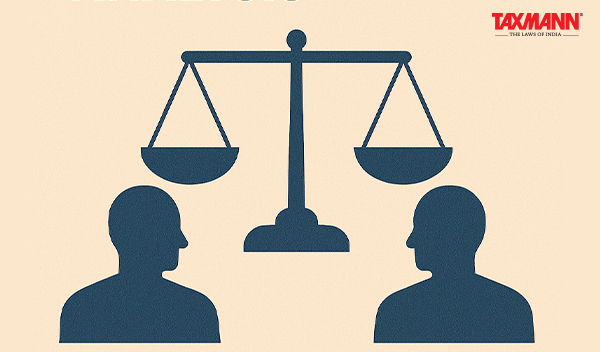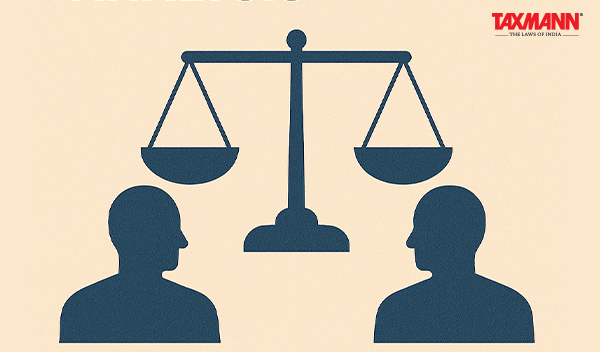
Ritika Singh – [2025] 174 taxmann.com 372 (Article)
The creditor-in-control model and the debtor-in-possession model represent two competing paradigms in corporate insolvency law, each with distinct implications for creditor rights, business viability, and economic efficiency. Considering global insolvency frameworks, which model better facilitates optimal debt resolution while balancing stakeholder interests? Critically evaluate the theoretical foundations, practical effectiveness, and jurisdictional variations of both models, considering their impact on financial stability, corporate governance, and economic growth, with a specific focus on India’s Insolvency and Bankruptcy Code, 2016.
1. Introduction & Conceptual Background
Corporate insolvency law worldwide has developed a struggle to achieve an appropriate relationship between financial survival and stakeholder equity. Two principal paradigms exist today in this domain namely Creditor-in-Control (CIC) alongside Debtor-in-Possession (DIP). The two frameworks implement contrasting designs along with different effects. While the DIP model, exemplified by the United States’ Chapter 11 regime, retains management control within the debtor firm during insolvency, the CIC model, prominently adopted in jurisdictions such as India through the Insolvency and Bankruptcy Code, 2016 shifts decision making authority to Committee of Creditors under the supervision of a Resolution Professional. The distinction between these models is not merely procedural—it reflects deeper theoretical, practical, and policy-driven considerations. The solution to corporate distress requires determining both business practicality and creditor protection and employee interest preservation. Supporters of DIP model performance agree that letting debtors control operations preserves company survival and lowers bankruptcy risks. The CIC advocates believe the most effective way to handle insolvency involves investors who possess better capabilities to recover losses and ensure accountability. India used its implementation of the CIC model through the IBC to transform its financial approach from debtor protection to creditor-focused management which builds credit accountability and controls NPAs while following international best standards. The IBC has garnered significant attention while people analyse its capacity to reconcile creditor interests with business preservation techniques along with possibilities for applying DIP model elements similar to those implemented in overseas jurisdictions.
The research evaluates these models across theoretical perspectives and practical observations together with comparisons between jurisdictions while concentrating on the Indian circumstances. The question arises whether the CIC model represents a superior debt resolution framework that properly meets stakeholder requirements. Emerging economies would achieve their long-term business preservation together with economic growth most effectively through a hybrid CIC model that can integrate selected features of DIP procedures.
The discussion proceeds in three parts:
- The First Part analyses both theoretical and jurisprudential initial segments.
- The Second Part includes the Comparative and Practical Analysis.
- The Third Part gives the Evaluation and Suggests the Policy Recommendations
- The Final Part gives the Conclusion.
2. Theoretical Foundations
These decision-making frameworks feature different approaches concerning responsibilities to stakeholders, alongside administrative systems as well as interests of various affected parties.
2.1 Theoretical Foundations of Insolvency Models
Insolvency law theory develops from multiple academic positions which have existed throughout time. The Creditors’ Bargain Theory stands as the main theoretical foundation of insolvency studies according to Jackson’s work because it treats insolvency as debt-collection by a group of creditors. In accordance with the model, insolvency procedures must reinstate the terms agreed by creditors before insolvency takes place when there are multiple participating creditors. The theory generally prioritises creditor interests due to their financial stake in insolvency decision-making.
The CIC model exists in India as it does in other countries Section 21 of the IBC, applies through CoC in India to serve as group representing all financial creditors of corporate debtors. The CoC full fills the previous management’s role together with the interim resolution professional while he exercises “powers of management of the company” throughout the resolution phase. debtor under sections 17, 18, 20, 23 and 25 of the Code.”
The Stakeholder Theory together with pragmatic restructuring arguments support the DIP models. Under this method debtors demonstrate better understanding of business operational requirements so they receive supervision that encourages good faith action when able to maintain managerial control. Within the U.S. Bankruptcy Code through Chapter 11 the concept of DiP provides both leadership and plan creation abilities to managers after filing bankruptcy but under court supervision.
2.2 India’s Creditor-in-Control Framework – Doctrinal and Structural Features
India’s IBC adopts the creditor-in-control model with clarity and purpose. Under Section 7, financial creditors can initiate the Corporate Insolvency Resolution Process (CIRP) upon a minimum default of Rs. 1 crore. The law states:
“The Adjudicating Authority shall, within fourteen days of the receipt of the application, ascertain the existence of a default… and if satisfied that a default has occurred, admit the application…”
Once admitted by the National Company Law Tribunal (NCLT), a moratorium is declared under Section 14, which provides:
“On the insolvency commencement date, the Adjudicating Authority shall by order declare a moratorium for prohibiting—(a) the institution of suits or continuation of pending suits or proceedings against the corporate debtor…”
During this phase, the Committee of Creditors (CoC) is constituted under Section 21, comprising all financial creditors. As per the statute:
“The committee of creditors shall comprise all financial creditors of the corporate debtor.”
Control shifts from management to a Resolution Professional (RP) under Sections 16–22, who administers the corporate debtor’s affairs during the CIRP. The CoC is empowered to approve resolution plans by a 66% majority. This role was judicially solidified in K Sashidhar v. Indian Overseas Bank [2019] 102 taxmann.com 139/152 SCL 312 where the Supreme Court stated:
“The Adjudicating Authority (NCLT) may cause an enquiry into the approved resolution plan on limited grounds referred to in Section 30(2)… It cannot make any other inquiry nor is competent to issue any direction in relation to the exercise of commercial wisdom of the financial creditors.”
Further, Section 29A of the IBC excludes defaulting promoters from participating in the bidding process to ensure accountability. The provision reads:
“A person shall not be eligible to submit a resolution plan if such person… has an account… classified as non-performing asset… and at least a period of one year has lapsed from the date of such classification.”
These provisions, upheld in Swiss Ribbons Pvt. Ltd’s. case (supra), have reinforced a regime that insulates the CIRP from insider interference and encourages a professionalised, creditor-led recovery process. The IBC also sets minimum safeguards for operational creditors under Section 30(2), stating:
“The resolution professional shall examine each resolution plan… [to confirm that it] provides for the payment of debts of operational creditors in such manner… which shall not be less than the amount to be paid… in the event of a liquidation.”
Despite these safeguards, critics argue that operational creditors remain sidelined in actual decision-making, highlighting a tension between statutory design and commercial execution. India’s adoption of the CIC model under the IBC marked a decisive break from prior regimes that struggled with fragmented debt recovery mechanisms. The earlier framework, characterised by a “debtor-in-possession” approach, allowed defaulting promoters to retain control indefinitely, leading to prolonged delays and low recoveries. The Banking Law Reforms Committee (BLRC) in 2015 underscored the need for a paradigm shift, stating:
“The appropriate disposition of a defaulting firm is a business decision, and only the creditors should make it.”
The IBC’s design reflects this philosophy. As the Supreme Court emphasised in Innoventive Industries Ltd. v. ICICI Bank Ltd., the Code’s objective is to prioritise creditor rights while ensuring the corporate debtor’s survival as a going concern. The Court noted:
“The erstwhile management, which is in charge of the corporate debtor, has no role to play once the corporate insolvency resolution process is initiated.”
This judicial stance solidified the transition from debtor-friendly regimes to a creditor-centric framework.
The IBC’s architecture ensures that control shifts decisively to financial creditors through the CoC, supported by the Resolution Professional (RP). This aligns with the BLRC’s view that creditors, as risk-bearers, are best positioned to maximise asset value. However, the Code’s introduction of pre-packaged insolvency for MSMEs in 2021 signals a nuanced shift toward hybridisation, blending debtor-in-possession flexibility with creditor oversight in low-complexity cases.
Click Here To Read The Full Article
The post [Opinion] Creditor‑vs‑Debtor Control – Comparative Insolvency Analysis appeared first on Taxmann Blog.
